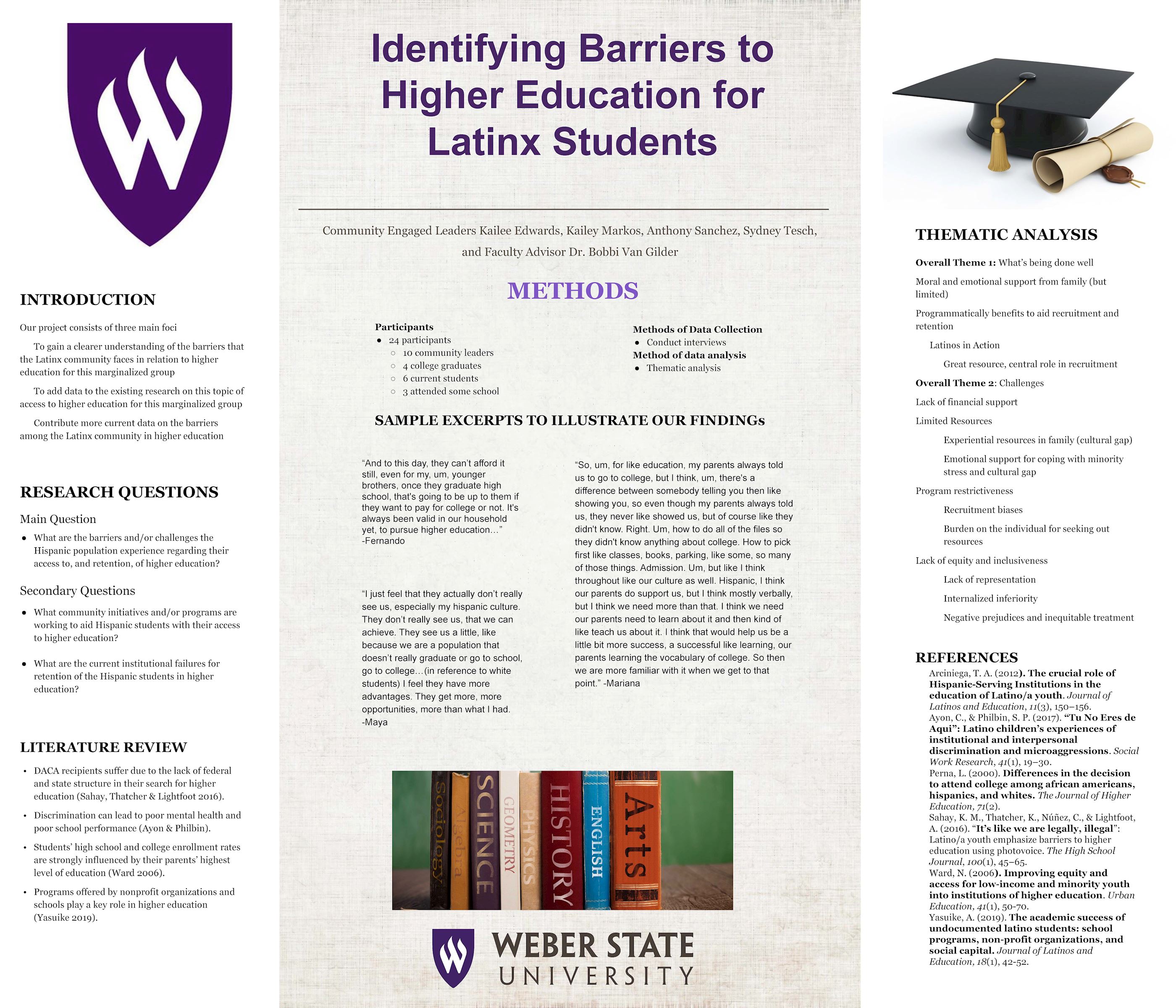
Identifying Barriers to Higher Education for Latinx Students

Authors: Community Engaged Leaders: Kailee Edwards, Kailey Markos, Anthony Sanchez, Sydney Tesch; and faculty advisor Dr. Bobbi Van Gilder
Introduction
Our project consists of three main foci
- To gain a clearer understanding of the barriers that the Latinx community faces in relation to higher education for this marginalized group
- To add data to the existing research on this topic of access to higher education for this marginalized group
- Contribute more current data on the barriers among the Latinx community in higher education
Research Questions
Main Question
- What are the barriers and/or challenges the Hispanic population experience regarding their access to, and retention, of higher education?
Secondary Questions
- What community initiatives and/or programs are working to aid Hispanic students with their access to higher education?
- What are the current institutional failures for retention of the Hispanic students in higher education?
Literature Review
DACA recipients suffer due to the lack of federal and state structure in their search for higher education (Sahay, Thatcher & Lightfoot 2016). Discrimination can lead to poor mental health and poor school performance (Ayon & Philbin). Students’ high school and college enrollment rates are strongly influenced by their parents’ highest level of education (Ward 2006). Programs offered by nonprofit organizations and schools play a key role in higher education (Yasuike 2019).
Methods:
Participants
- 24 participants
- 10 community leaders
- 4 college graduates
- 6 current students
- 3 attended some school
Methods of Data Collection
- Conduct interviews
Method of data analysis
- Thematic analysis
Thematic Analysis:
Overall Theme 1: What’s being done well
- Moral and emotional support from family (but limited)
- Programmatically benefits to aid recruitment and retention Latinos in Action Great resource, central role in recruitment
Overall Theme 2: Challenges
Lack of financial support
Limited Resources
- Experiential resources in family (cultural gap)
- Emotional support for coping with minority stress and cultural gap
Program restrictiveness
- Recruitment biases
- Burden on the individual for seeking out resources
Back to Community Engagement Symposium
